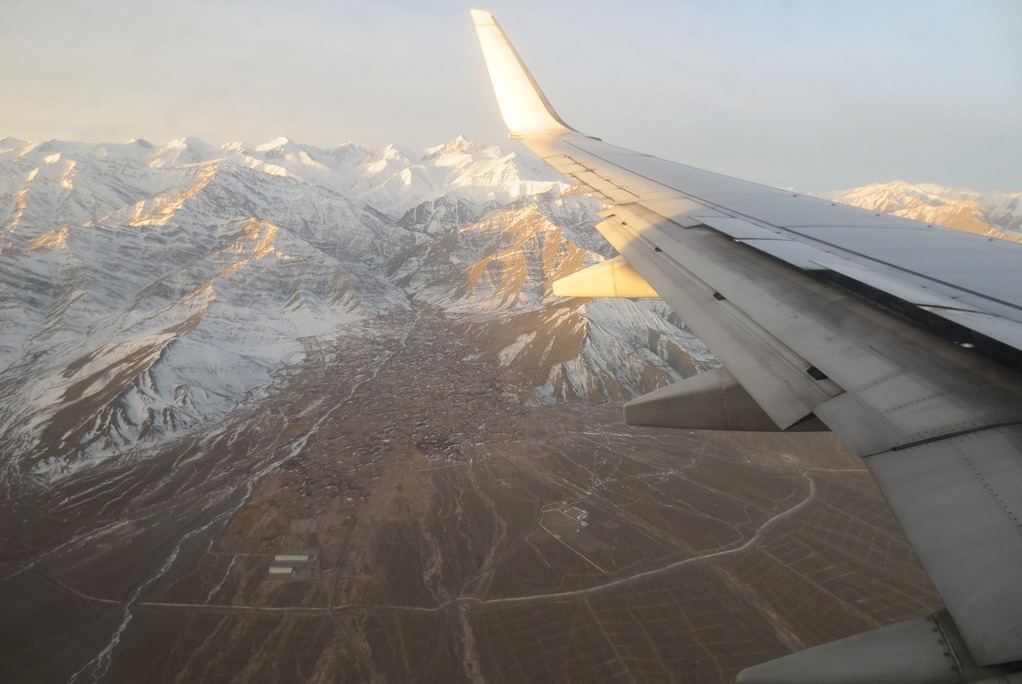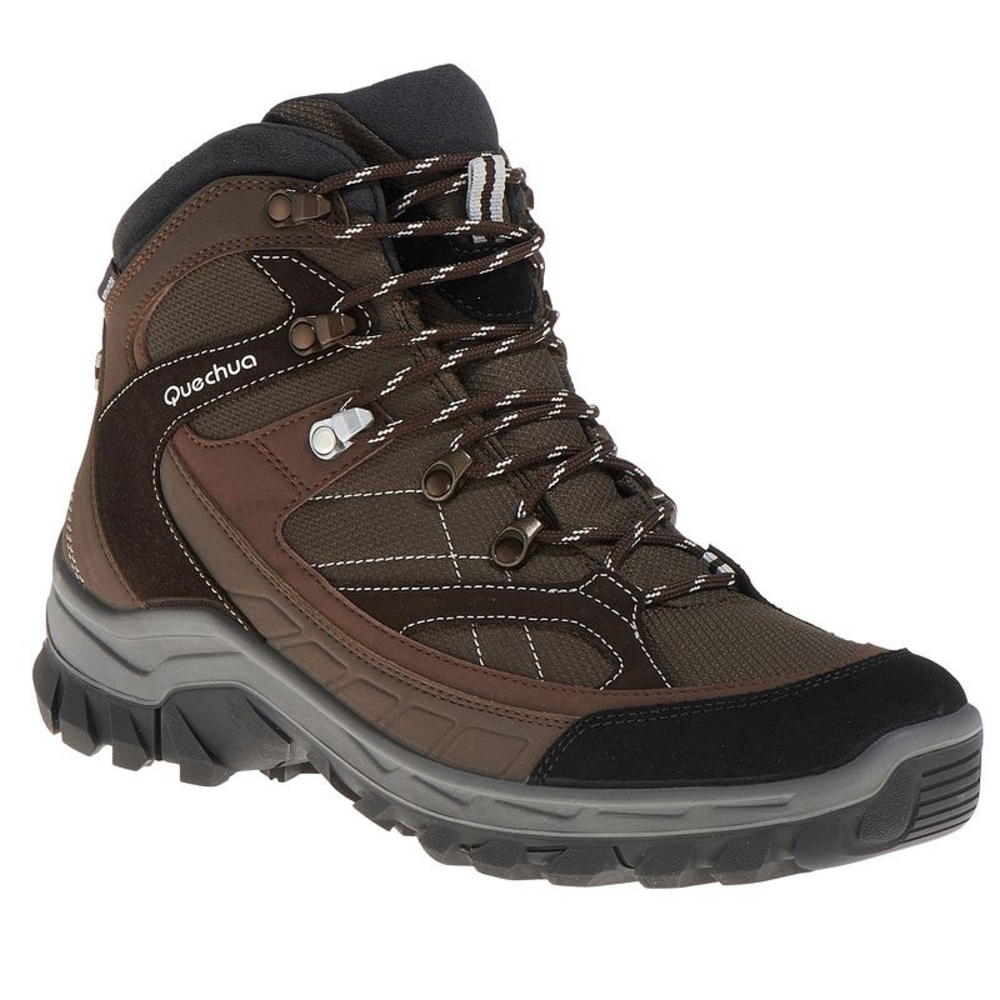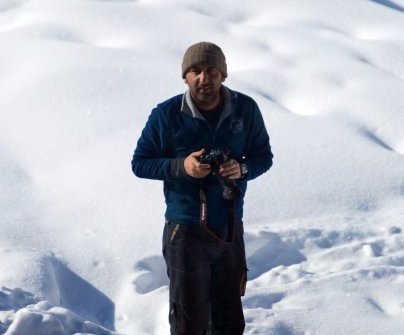WhiteMagic Adventure Blog
Chadar Trek FAQs
Chadar Trek FAQs
With Chadar being a one of a kind trip and a popular one at that , people always tend to have a lot of questions about the trek. Here's listing a few FAQs, answered. Hope this helps in clearing some air about the Chadar. 1. Will Leh be accessible by road then? Rohtang pass shuts down then, but am not sure of the Kashmir route? Leh would not be accessible by road at all. You will have to fly in & out.
2. How cold does it get on the Chadar Trek? The toughest part about this trek is to deal with the extremely low temperatures, day in & out. On a bad day, the min temperatures can drop down to -30 deg C. Average day time temperatures are about -18 deg C. On a sunny day you would not be able to make much difference between -5 deg & -18 deg C. It is only when the winds start blowing or if your body part is wet that you will understand that it is much colder. Temperature in Leh ranges between -10 to -15 deg C
3. Can Chadar be my first Trek? Apart from the extreme cold and the glassy terrain, Chadar is not a difficult trek. There is hardly any gain in altitude. You would always be between 3400m to 3700m. Once you have acclimatized, you should not have any high altitude related problems on this trek. Next, the trek is not very rigorous. You do not have to be super fit to do this trek. All we are doing is walking carefully on ice with occasional crossings over rocks if the chadar is broken. Walking on ice is also something you will pick up pretty fast. Clients normally have problems adjusting to the penguin gait on the first day and do take a few falls. But from the second day itself you can see the confidence in their strides.
This trek is a lot about preparation (gear wise) to deal with cold temperatures. If you are well kitted out and reasonably fit you will enjoy the magnificent scenery in the gorge, if not it can be quite tough. Keeping all this in mind, yes, Chadar can be your first trek. 4. How do I need to prepare for physical fitness? I mean what is the basic threshold? Is it like being able to run 4 kms in 30 mins or what? Physically it is not very taxing as there are no steep ascents & descents. You walk on the surface of the frozen river & the walk is always quite flat unless sometimes when the Chadar is not very well formed one would need to scramble up the slopes for some time. If you follow some fitness regime, just continue doing that. If not you can do some cardio exercises (running, swimming, cycling, skipping or playing some sport) - at least 30 min 2-3 times a week should be good enough. Preparation in terms of gear & dealing with the cold is more important on this trip than physical preparation.
5. Are Hotels open during the winters? Once upon a time, hardly any tourists visited Ladakh in the Winters. Over the years, the popularity of the Chadar Trek and the prospect of spotting snow Leopards have increased the tourist influx in the Winters too. But compared to the Summers only a select few hotels are open during the Winters. There are many small guest houses operational too.
6. Do Hotels have running water? There is no running water in most of the hotels during the winters. The extreme temperatures (minus 10 to 20 deg C) freeze the water in the pipes which leads to rupturing of the water lines. The only method is to deliver hot water in buckets to the hotel rooms. A select few hotels these days have running water wherein they use motors to circulate water in the pipes throughout the night when temperatures are coldest and water tends to freeze if not moving.
7. What are the facilities in a Homestay? How different are they to Hotels Like the name goes, Homestays are extremely different from a regular Hotel. Homestays generally have a few extra rooms which are given out to guests visiting Ladakh/Zanskar. Lingshed, Zangla and Karsha have excellent homestays with Bukhari (heater) in the living room which warms up the whole room in a matter of minutes. Some Homestays use the Bukhari for cooking or just heating the Water. These homestays have wood stocked for the Winter months and ration it all through the season to keep the Bukhari going. The rooms are spacious and clean and the toilets are dry, compost pits. The best part about homestays are the hosts who are extremely warm and hospitable. 8. Is the Leh Market open in Winters? Most of the Kashmiri shops selling items like shawls, carpets, masks and curio that abound the market in the summers are all shut. Most of the big eating joints are also closed. The small eating joints selling simple Indian and Tibetan Food are open. The most popular eating joint would surely be Neha snacks in the main Market selling Punjabi food and Tea. Moti Market and the smaller shops in the bylanes of Nowshera, Balkhang, etc are all open.
9. What kind of footwear do I need to wear on this trek? Most of the local porters wear gumboots on the Chadar Trek which are easily available in Leh. This seems to be the most practical and inexpensive option for walking on ice. A lot of people do the whole trek with gumboots; however it is not easy walking in them all the time as they are not very comfortable. They come quite high up around your shin & sometimes people get severe rashes on the shin & blisters on their feet. We advise that you bring waterproof boots with you. Quechua has some good trekking boots which work well for Chadar too. Forclaz 500 is good enough. At times when Chadar does not freeze very well, we advise people to use gum boots. We use them only when it is required to wade through the water in which case the normal boots are no good. Gum Boots are easily available for cheap in Leh (Rs 400 to 500). Gumboots are also available online at www.gumboots.in
Ice grips under the shoe help in increasing the traction and adding stability to your gait. 10. So, how does the Forclaz 600 sound, which is available here in Decathlon? Forclaz 600 is fine. When you go & buy one make sure that you wear those with thick/woollen socks not the thin ones. You should not buy something which is a tight fit, err on the looser side. Sometimes at altitudes your feet swell a bit too. If it’s loose you can always wear an extra pair of socks to counter it.
11. Do I need gumboots? Do I buy them here or in Leh? No shoes are really waterproof for wading in water. Hence, you definitely need gumboots. When we will have to wade through water, we will have to put on the gumboots. They are easily available in Leh, but once we have faced a problem with finding the right shoe size due to shortage in supply. You can order it online through websites like www.gumboots.in
12. Do I have to wear crampons? We don’t think you should wear crampons as it’s quite tiring to walk with crampons the whole day. It’s also not easy to walk with them on uneven terrain and at places where the Chadar is not thick enough it can break open the surface. You should wear something called Ice Grips that will give you better balance while Walking on Ice. Some examples of Ice Grips are • DryGuy Monster Grips Ice and Snow Traction • Trex 6300 Ice Traction Device The "DryGuy Monster Grips Ice and Snow Traction" looks good. It has 10 studs compared to the "Trex 6300 Ice Traction Device" which has 8 studs. Make sure to buy the right size.
There is a wide variety of Ice Grips that you could choose from. Some of which look like micro crampons. Check www.icegripper.co.uk 13. Do I need a fleece Jacket or a down Jacket? Yes, you need both a fleece Jacket and a down Jacket… and good ones! It is cold throughout. You can normally do with just a fleece while walking since your body is generating enough heat. But once you reach Campsite and in the evenings a good down jacket is a must.
14. How are the duffel bags and camping equipment transported from Camp to Camp? Porters are the mainstay for transporting luggage on Chadar Trek. Most of the porters come from Zanskar and walk the chadar four times to complete one trek with clients. Lucky ones get to do 3 to 4 in one season. The loads that the porters carry is about 20Kg+. Most of the time, loads are tied to sledges and are pulled on ice. At places where the chadar is broken, is where the load is actually lifted on the back like a big backpack. Apart from the load given to them, porters have their personal bags and their own ration that they carry.
15. Does drinking water freeze on Chadar? How can we counter that? Drinking water needs to be kept adequately warm to counter freezing. You are normally given hot water in the mornings in your water bottles. You can keep this inside your day sack instead of the side pocket to avoid freezing. Buying a water bottle sleeve ensures that it does not freeze. We also suggest clients to carry a 1 ltr Thermos apart from their regular bottles to keep the water warm which could be used for drinking tea or warm juice on the trail.
16. What kind of sleeping bags would work on the Chadar Trek? You need sleeping bags that should withstand atleast -20 degree Celsius. Such sleeping bags are used only by mountaineers climbing summits above 6000m+ in the Himalaya or people who do winter expeditions. White Magic rents out excellent sleeping bags for clients signing up on the Chadar Trek. These sleeping bags come in 2 layers – a Down Inner and a Hollofil Outer and are generally similar to the ones used by the Indian Army on the Siachen Glacier where temperatures can get severe. These sleeping bags have been successfully used on the Chadar Trek and are great to keep you warm during those bitterly cold nights. 17. What kind of Lunch is served during the Chadar? Lunch is generally prepared fresh and hot right mid-way through the trek. This works better than serving packed Lunch.
18. Will we light a campfire at Camps on the Chadar Trek? Wood is scarce on the chadar and difficult to find. Also, the trek is now so popular that many groups flock Ladakh in the winters to do the trek. That means wood is in short supply. But, wherever we can find some wood we will get the fire going during the evenings.
19. What is the group size? We do not take more than 12 on any trip on Chadar.
20. As I have time in hand, and I haven't been to Leh ever, I want to reach few days prior to your trip schedule.. I was thinking about 5 days in advance, what do you suggest? Leh in winters is a different planet - everything is shut, there are only a few shops which open up & which sell the essentials required by the locals. Don’t think you would like to arrive much earlier as the trip is anyways 2 days longer. A couple of days ahead would be more than enough. About possible places where you could go - 1) You can visit some monasteries close by. We also take people out to a monastery or two on our acclimatization day in Leh. 2) One can drive to Pangong Lake & back. It would be a long day - 12-13 hrs / you will have to book a private vehicle. That is pretty much about it!
In the winters the temperatures are really low & a lot of homestays / hotels / guest houses are not centrally heated. You anyways are doing a 12/14 day trek. I guess by the end of it you would be quite fed up with the cold & would really want to get out & thaw yourself in a warmer place. 21. My hands and feet get excessively cold. I read about these hand warmers which are available on amazon.Do you think it makes sense to buy these? If you tend to freeze quite quickly, it is not a bad idea to have hand & toe warmers for a bad weather day. Now, Warmee’s are easily available in India and work very well in the mountains. 22. What about that walking stick kind of thing? A pair of walking poles is essential.
 Walking Sticks are essential on the Chadar Trek. They help in balancing on ice and also checking its thickness
Walking Sticks are essential on the Chadar Trek. They help in balancing on ice and also checking its thickness
23. For someone who wears glasses, how do you manage? Obviously we can't wear contacts there. Bring glasses, I think you should take contacts too & see if they work. 24. What is the status at chadar for phone network, accessibility for communication? You have phone connectivity only in Leh. On the trek there is no connectivity. The villages do have a satellite phone each installed by the government, which you can use by paying a minimal charge, but connectivity is not very reliable. 25. What kind of cameras would work/not work in that weather? Any camera would work; it is batteries which is a problem. When the temperatures are low the batteries discharge faster. If you intend to take a lot of pictures on the trek, we recommend that you carry a couple of spare batteries with you and keep them wrapped up and warm in the nights.
26. I have usually not used mobile cameras but now may want to. Is there any provision for keeping batteries charged? Carry a power bank and use your mobile sparingly, just to take pictures. 27. What are the common injuries on Chadar Trek? Most times serious injuries on Chadar are always a result of slipping and taking bad falls on ice. Be very careful while walking on blue glassy ice surfaces which are most slippery! A thin layer of snow on the ice actually helps in increasing the traction to the ice. All this can be avoided by being a little cautious and using ice grips under the shoes and walking poles. Photo Credits: Avilash Bisht, Sanjeev Ganju, Vishwas Raj, Milan Moudgill






















Add new comment